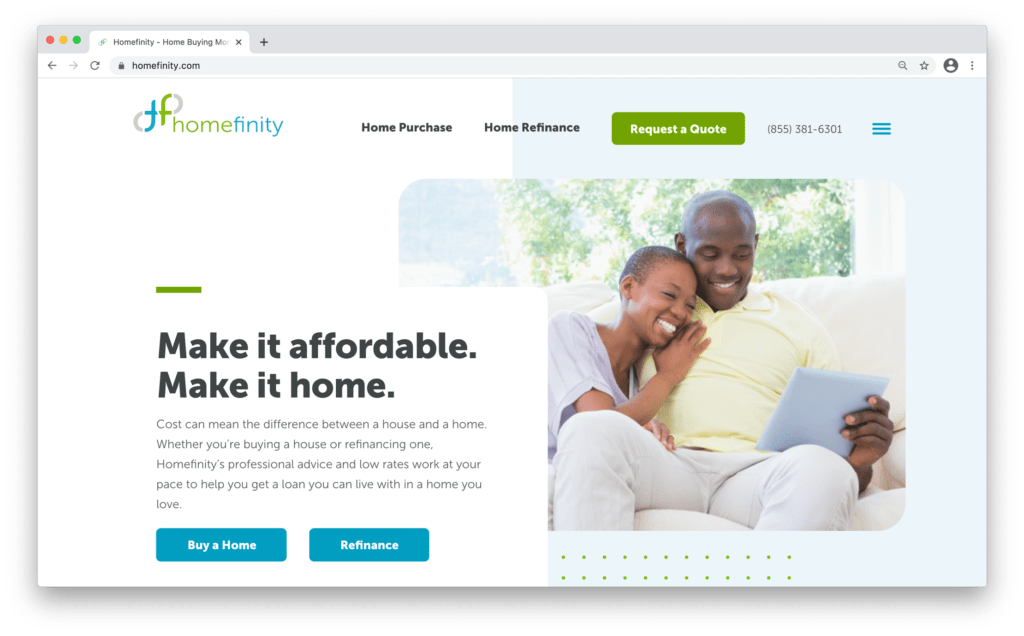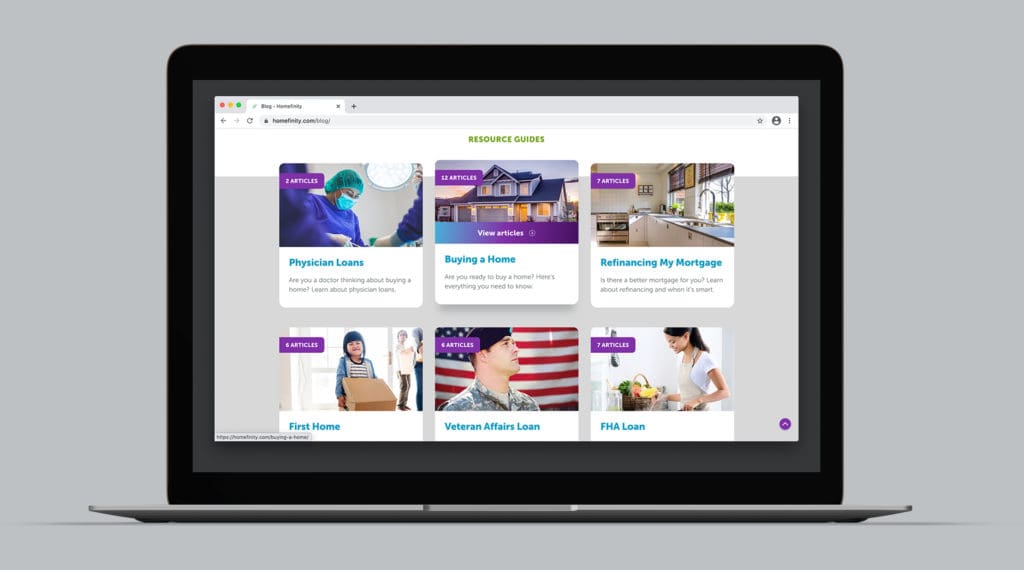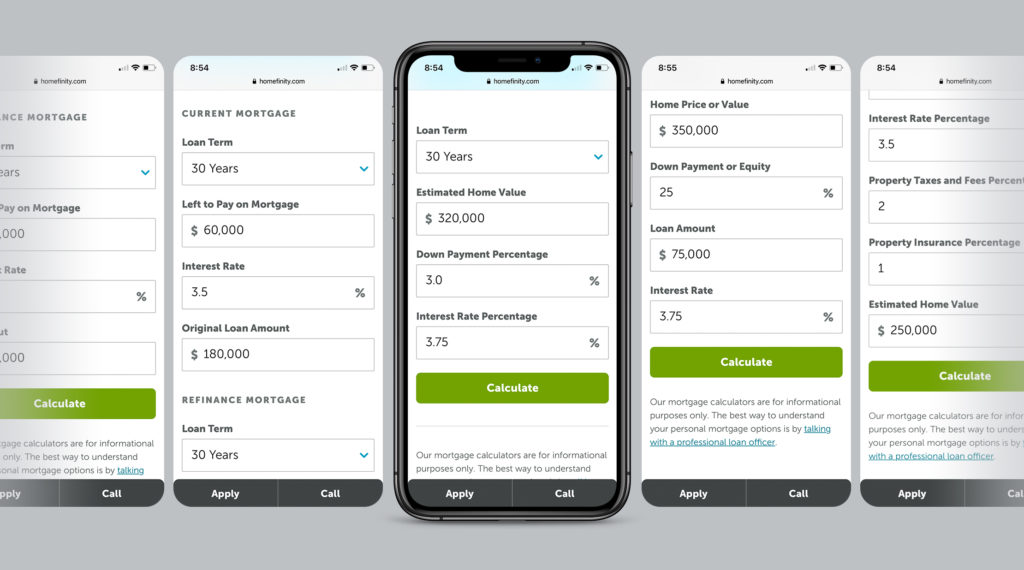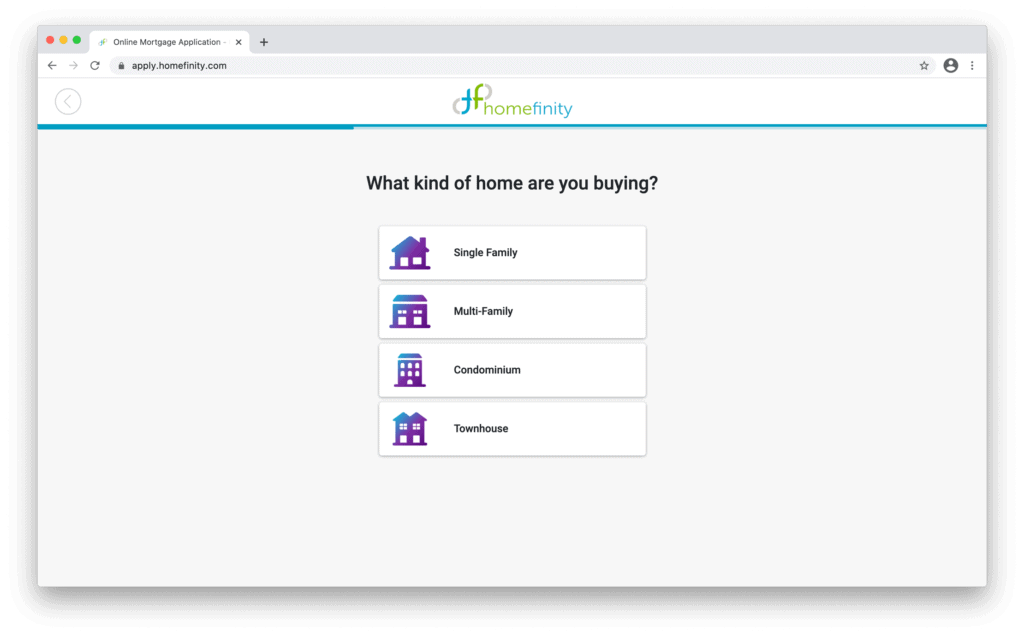Consumer-direct mortgage website
Our Approach
Kaleidico’s mortgage lending and lead generation experience is a powerful combination for innovative lenders. By weaving together your unique positioning and our online lending expertise, we design web platforms that consistently accelerate your online visibility and channel growth.

MORTGAGE LEAD BUYING
Kaleidico designed a strategy that leveraged Homefinity’s current lead buying, traditional loan officer sales activity, and a new SEO-driven content program to boost their new website’s traffic and lead generation performance.

MORTGAGE CALCULATORS & RATES
Customers visit the mortgage website looking for mortgage calculators and mortgage rates. Calculators to determine monthly payments and compare loan options and rates to determine if the time is right to buy to refinance.
Too often, lenders either don’t offer these calculators or use old, clumsy, cheap “widgets” borrowed from some mortgage calculator site. These kinds of experiences simply frustrate customers and drive them to better-designed websites.
Kaleidico designed and developed custom mortgage calculators and rate tables. These tools seamlessly integrated with Homefinity’s unique user experience, delighting clients and generating new mortgage leads.

CUSTOM PROGRESSIVE LEAD FORMS
When your customer is ready to apply online, don’t make it hard.
Believe it or not, this is another common mortgage website mistake. Either they neglect to offer a path to apply at all or use some cumbersome POS system that assumes your customer is a professional loan officer.
Kaleidico used FlipForms.io to design progressive lead forms that are quick and easy for the customer to complete and flexible for ongoing optimization. And, of course, everything is tightly integrated with Homefinity’s mortgage CRM for instant lead distribution.

Results Section Headline
Scope of Work
Web Design
Brand Strategy
Lead Generation
Content Strategy SEO
Content Marketing
Sales Optimization
Sales Training Content
Velocify Optimization